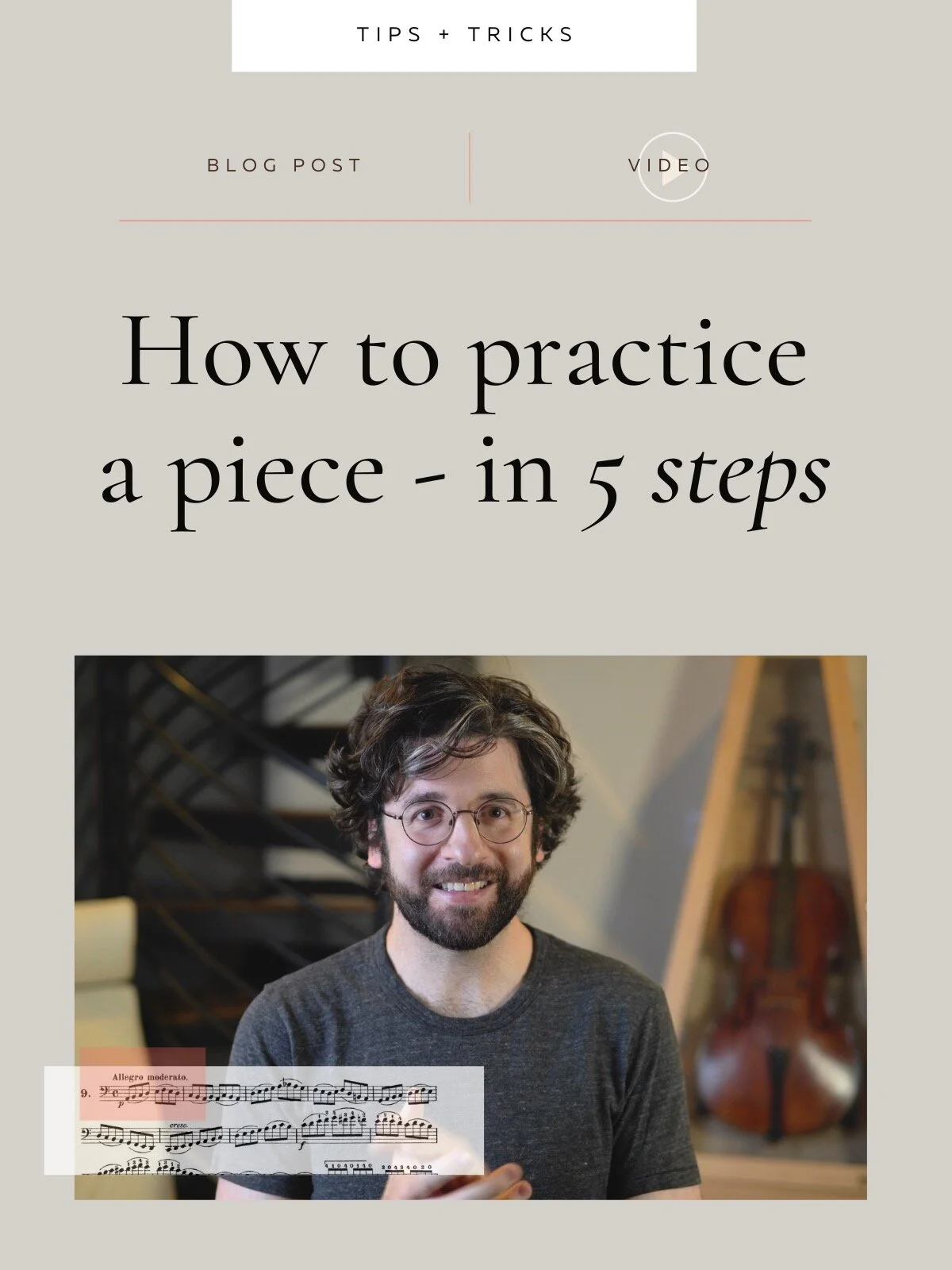All. About. Rosin. | Adult Cello
Sometimes I think that even the smaller, more mundane aspects of cello playing are still infused with a sort of romanticism perfect for pulling us out of the innumerable video screens of the 21st century and back into simpler times of wood and fire and the magic of rich sounds only audible if someone is actually producing them live.
Most days I rosin up my bow before practice without thinking twice.
But recently, having started a new cake last week, I was struck by the beauty of it’s amber color and charmed when I later read on the brand’s website that their recipe comes from Cremona and dates back to the time of Paganini.
However, rosin can be a sticky issue for beginners, and in a way I’m writing this post for myself 13 years ago when I first started.
You see, without meaning to I became an over-indulger in rosin.
All I was told was that if I didn’t have enough rosin on my bow I would have trouble making sound.
So naturally I wanted to give myself the best chance of success on my journey, so I started rosining my bow every practice session, now matter how short.
Then I started applying rosin every 15 minutes or so during practice.
By about six months in I was applying rosin between each scale run that I played.
A little over a year and a half into my journey I got to perform publicly for the first time in a benefit concert for the Applied Music program at Santa Monica College.
I had gone back to school to get an education in music and now I was about to go onstage for the first time in public and play a movement of a piano trio that a fellow student had written.
Naturally I was a little nervy and so I expressed that by rosining up the bow even more than usual.
It was time. I sat down, arranged my music on the stand, the piano started, followed by the flute, and then it was time for my entrance, a rolled G major chord in first position, fortissimo.
I hit the chord and was immediately distracted by a cloud of rosin dust that plumed upwards, caught by the stage lighting.
I probably looked more like part of a magic act than a cellist playing in a trio. It was so distracting that I almost let the train run off the tracks.
This event, plus a trip to the luthier where he was shocked and horrified by the rosin buildup on my cello’s body, helped me realize that there actually is an art involved in using rosin; in how much to apply and how often to apply.
So today we’re going to cover the topic of rosin.
Years ago, during my first cello lesson, I learned that my bow essentially wouldn’t work without rosin, but I still had a lot of questions…..which type to use, does the type or brand even make a difference, how much to use…
If you’re in the same boat as I was, then this article is for you. So let’s dive right in.
Rosin is made primarily from the sap of pine trees (makers choose from around 110 different species of pine trees according to the prescriptions of their secret recipes).
The freshest rosin is obtained by tapping into living trees, and one thing I find super interesting is that often the color of the rosin corresponds to the season in which it was harvested.
Lighter colors usually come from late winter/early spring, darker from summer/fall.
The makers then add other ingredients such as the sap from other types of trees or elements like gold, silver, copper, etc.
They heat everything up, strain out the impurities, and when the rosin has started to cool, they pour it into the molds and let it cool naturally.
I love knowing this because it reminds me that, as with luthiers and the art of cello making, many makers of high end rosin use the same tools and processes that stretch back hundreds of years.
So, history lesson out of the way, let’s talk a little more pragmatically. Here’s my take on the questions I get asked most frequently about rosin.
What type do you use/recommend?
I personally use a brand called Baker’s and I love it.
The only catch is that they have a very limited supply (they make it only once a year) and I’m not sure they are still accepting names for new orders.
However, there are tons of great rosins out there and one I like to suggest that is excellent and not crazy expensive is Oliv by Pirastro. I’ve found it works great with all the bows and instruments I’ve tried it on. Link at the bottom!
What’s the difference between light and dark rosin?
In general, lighter rosin will be a little harder and finer (less sticky), and darker rosin is softer and stickier and more suited for the lower strings, cello and bass.
That being said, I personally tend to shy away from extra sticky rosin because I prefer rosin that encourages a smoother sound and less punchy starts to my bow strokes.
Does changing rosin types or brands really make a difference?
So, the answer is yes, but it’s one of the last things I would really worry about.
For me it goes, cello and bow tied for number one in importance, then I would worry about choosing the right cello strings, and then, much lower on the totem pole and later on are items like finding the perfect rosin, the type of tailpiece I’m using, the type of endpin I’m using, etc.
However, if you currently have a really cheap or really old cake of rosin, buying yourself a nice new cake of the good stuff will probably make a big difference. I mean, for $10-15 bucks, why not give it a try?
Does rosin go bad?
I know people who keep their extra rosin in a small jar in the fridge at home because they stress about it drying out and I also know great players who still use the same tiny sliver of rosin from a cake they bought over a decade ago.
Personally, I do think rosin feels different as it begins to dry out.
I guess it becomes a question of whether you decide to care about it or not.
I usually retire a cake of rosin after a year or a year and a half, and often I notice a big difference with the brand new stuff.
There’s also something really fun about opening a new cake of rosin, feeling the improved grip on the strings and even smelling its woody freshness, so why not treat yourself?
How do I rosin up my bow correctly?
Here’s what I do: I hold the rosin in my left hand and then take the bow in my right hand with my usual bow grip.
I place the bow on the rosin at the frog and pull a full bow all the way to the tip, really sinking into the rosin with all of the hair.
There should be an audible hissing sound, you don’t want to simply tickle the strings. You need to get in there.
4-5 swipes in this manner and I’m good to go.
Finally, how much rosin should you use?
Not too little, but having read my earlier account, not too much either!
I would say, for someone practicing 2-3 hours a day, maybe rosining the bow once a day before your first practice session.
If you practice 30 minutes a day, maybe you only need to apply rosin every 3-4 days.
Eventually, you will develop a sense of when your bow hair isn’t gripping the string like it should.
That is your best indicator that it’s time for a little more rosin.
I hope this article helps. If you have any other questions about rosin, or cello playing in general, please feel free to contact me at billy@adultcello.com.
Click HERE for a link to Oliv rosin by Pirastro.











